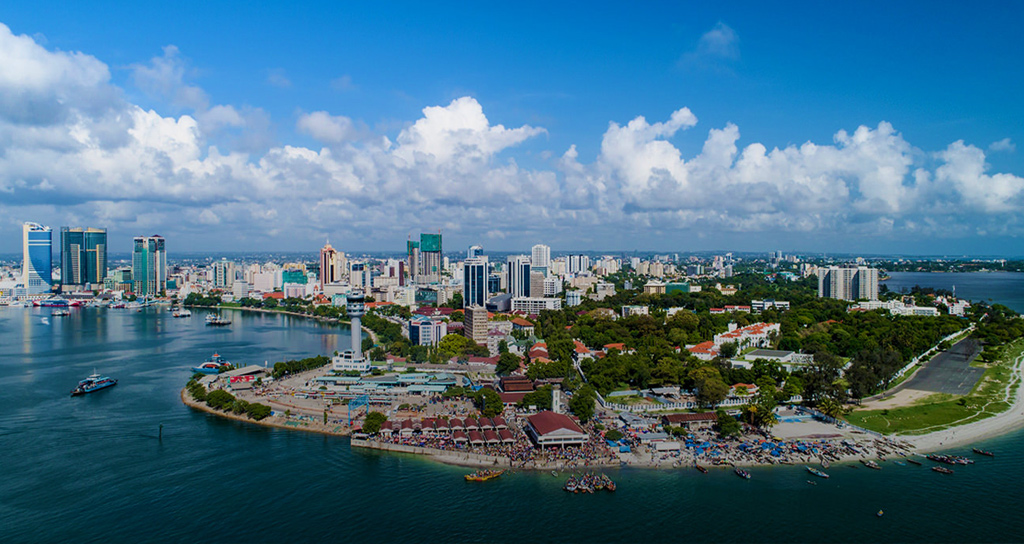
By 2025, the country expects to be an industrialized middle-income country. In accordance with this vision, we have decided to place a greater emphasis on developing a strong industrial base. Tanzania has established Export Processing Zones (EPZs) and Special Economic Zones (SEZs) as ponds of industrial growth and services in order to promote export trade. The EPZ scheme encourages investment in the manufacturing sector, primarily for export, whereas the SEZ scheme includes agriculture, trade, tourism, mining, and forestry.
Tanzania provides generous fiscal incentives through the Export Processing Zone/Special Economic Zone (EPZ/SEZ) schemes in order to attract both FDIs and domestic direct investments (DDIs).
Improving Tanzania’s transportation infrastructure is a top priority for the Tanzanian government.
The development of the country’s roads, ports, railways, and airport infrastructure is critical for the country’s internal and external trade and commercial activities. As Tanzania strives to become a middle-income country, the sector’s future development will include improvements in the energy sector.
Infrastructure projects present exciting opportunities for investors seeking to capitalize on Tanzania’s rapidly expanding economy.
Tanzania has risen to the top of the African economies in terms of attracting FDIs. Tanzania is rich in a wide range of industrial minerals, precious metals, and gemstones. Iron ore, soda ash, coal, clay soil, uranium, gold, diamond, and tanzanite are among them.
Tanzania has a diverse range of industrial minerals, precious metals, and gemstones, including iron ore, soda ash, coal, clay soil, uranium, and gold. Tanzania also possesses a diverse range of gemstones, including aquamarine, garnet, ruby, sapphire, tourmaline, and tanzanite.
This sector is critical to Tanzania's industrialization since it provides markets for industrial products as well as raw materials. Tanzania has 44 million hectares of arable land, including 29.4 million hectares suited to irrigation.
From the present 300,000 tons per year, the sugar supply shortfall is expected to grow at a rate of 6% per year
In target sugar zones, the soil and topography are excellent for industrial sugarcane cultivation.
Tanzania's tourism industry accounts for around 24% of exports and 17.2% of GDP. This is a rapidly expanding industry with numerous investment prospects.
Construction of Tourist Hotels in towns, game parks, and along the 850-mile coast line of mainland Tanzania and the gorgeous coastlines of the spice Island of Zanzibar are all regions where tourism offers plenty of investment prospects.
There are 16 National Parks, 28 Game Reserves, 44 Game Controlled Areas, 1 Conservation Area, and 2 Marine Parks in Tanzania. • Tanzania's wildlife resources are among the best in the world and have long been well-known.
In 2014, the industry continued to thrive, as evidenced by an increase in international tourist arrivals to 1,140,156 from 782,699 in 2010. As a result, tourism revenue climbed from USD 1,254.50 in 2010 to USD 2,006.32 million in 2011.
The services sector, notably ICT, which is one of Tanzania's fastest-growing sub-sectors, offers great opportunities. In the previous ten years, Tanzania's communications market has experienced remarkable expansion and transformation. The ICT market has expanded in terms of subscribers, service variety, and geographic coverage.
Tanzania has a total size of 945,037 square kilometers. Freshwater cover is predicted to be 54,337 square kilometers, or around 6.1 percent of the country's total surface area. The country has a 64,000-square-kilometer Territorial Sea, a 223,000-square-kilometer Exclusive Economic Zone (EEZ), and a 1,424-kilometer stretch of Indian Ocean coastline, as well as other inland water bodies (major and minor lakes, rivers, dams, ponds, and wetlands) covering about 5,000 square kilometers. Lake Victoria (shared with Kenya and Uganda), Lake Tanganyika (shared with Burundi, DRC, and Zambia), and Lake Nyasa are the country's three major interior lakes (shared with Malawi and Mozambique). Establishment of fishing port and fishing in the Exclusive Economic Zone
Tanzania offers excellent natural resources for livestock production, including hardy livestock breeds, wide rangelands, and diversified natural vegetation. The country's land resources total 88.6 million hectares, of which 60 million hectares are suitable for grazing.
Tanzania has a varied range of energy resources, including biomass, natural gas, hydro, coal, geothermal, solar and wind power, and uranium, much of which is still underutilized. Petroleum and electricity, which are commercial energy sources, account for roughly 8% and 1.2 percent of the primary energy used, respectively. Coal, solar, and wind make up less than 1% of the total.
Wood-fuel contributes for up to 90% of total national energy consumption, with electricity accounting for 2% and petroleum products accounting for 8%.
Accommodation in Dar es Salaam and other cosmopolitan places is in short supply, owing to, among other things, the rapid expansion of economic projects, which has drawn a large number of people (both international and local) in need of a place to live. Investors may form a partnership with the National Housing Corporation (NHC), Tanzania Building Agency (TBA), or other private companies to supply residential and commercial building solutions. Development and management of housing estates
Half of Tanzania's 45 million people are expected to move to cities in the next 20 years, thus more needs to be done in terms of housing loans and construction to fulfill the country's ever-growing housing demands.